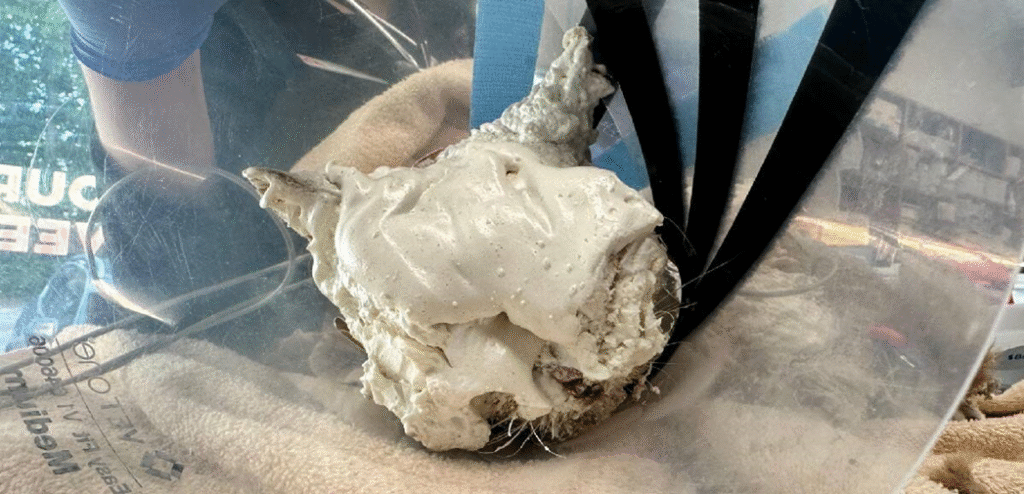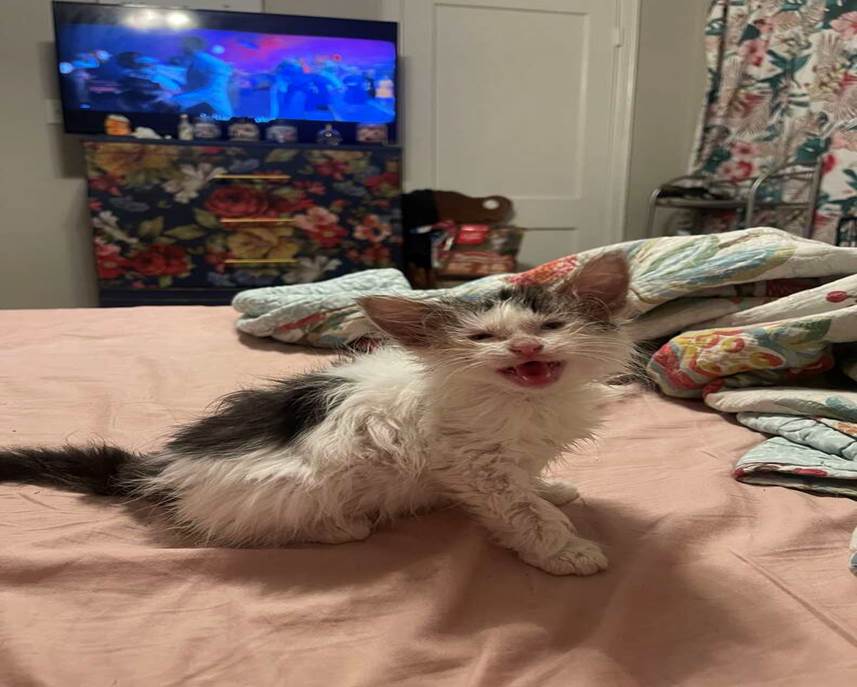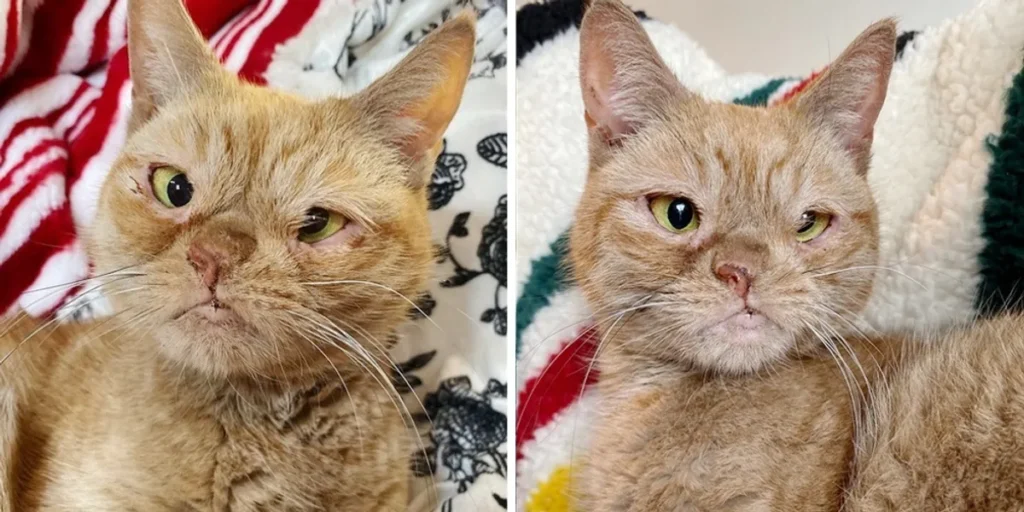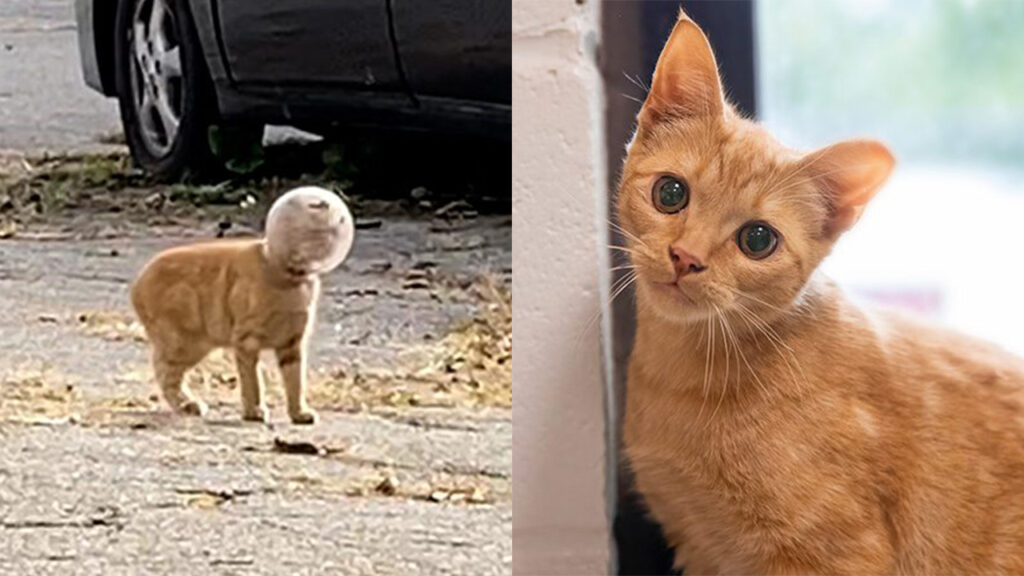The Rescue of the Phantom: What Was Hiding Under All This Foam
The overnight shift in the emergency veterinary hospital was usually defined by quiet, rhythmic beeping machines, the low hum of ventilation, and the occasional frantic arrival of a genuine crisis. Tonight, the crisis arrived in a silent, staggering wave of white. It was 2:00 a.m. when the doors burst open, and two firefighters, smelling strongly of smoke and chemicals, rushed in. They were carrying something small, inert, and completely encased in what looked like a bizarre, terrifying sculpture of insulation foam. “We found him at the scene of the industrial fire,” the first firefighter, Mark, said, his voice raspy. “He was locked in a small storage room. We think he might have swallowed some debris, but the biggest problem is this… this stuff. It’s some kind of quick-drying, expanding sealant foam. It’s everywhere.” Dr. Vivian Lee, the lead emergency veterinarian, approached the small carrier. The animal, which they deduced was a cat from the visible outline, was immobile. Its breathing was shallow, and the foam covered nearly every inch of its body from the neck down, hardening instantly into a suffocating, plaster-like shell. Even the tail and paws were encased. Only the cat’s head and neck were clear, thankfully, and they were the only parts that revealed the small animal underneath. He was a large, sleek shorthair cat, with brilliant green eyes and pointed ears slightly stained with soot. He was terrified, but what struck Dr. Lee was his utter stillness. He was trapped, yet he wasn’t thrashing or biting. He was simply enduring, waiting for help. The triage team immediately got to work, but the foam presented an unprecedented challenge. This wasn’t mud or oil; it was a polymeric substance designed to be permanent. “We can’t X-ray him like this,” Nurse Ben muttered, attempting to feel for a heartbeat through the rock-hard casing. “And we certainly can’t shave it off. It’ll tear his delicate skin right off.” The immediate priorities were clear: stabilizing the cat’s temperature, administering fluids, and finding a way to safely dissolve the foam without causing chemical burns to the skin beneath. They started with a large-dose, high-fat emollient bath—the same kind used to remove stubborn tar, but applied with extreme caution. The process was excruciatingly slow. One hour became two. The team worked like sculptors, carefully chipping away large, dense chunks of foam from the cat’s limbs and flanks, then slathering the remaining patches with emollients and gentle, acidic washes, waiting for the chemical bond to break. The cat, whom Dr. Lee nicknamed Phantom for his silent, ghost-like appearance under the white coating, remained unnervingly passive. When they began working on the highly sensitive areas around his chest and abdomen, he let out a faint, distressed meow, but he never hissed or clawed. He just lay there, eyes tracking their movements, an animal of immense patience. Finally, three hours into the process, they got to the core of the problem: the face. A thin layer of sticky, fast-drying sealant had caked the fur around his mouth and nose. When they gently peeled back the last pieces of the polymer, Dr. Lee noticed something strange. The fur wasn’t just matted; it looked almost… neatly separated. And underneath the grime, she saw a faint, perfectly straight line across his cheeks, almost like a seam. “Stop!” Dr. Lee commanded, holding up her hand. “Ben, look here. That’s not just a foam line. He had a specialty mask on. Something covering his nose and mouth, and it was tight.” The tight, sealed mask would explain the foam’s inability to fully seal his airways, saving his life. But why was a cat, locked in an industrial room, wearing specific protective gear designed for work or transport? As the final, stubborn patches of foam were softened and rinsed away, they finally saw the real cat. Underneath the sooty, waterlogged coat, Phantom was not just a shorthair. He was a magnificent Siberian Cat—large, heavily muscled, and with a coat designed to withstand extreme cold. But it was what was on him, not what was under the foam, that stunned them. As Nurse Ben rinsed the cat’s right ear, the last bits of foam sloughed off, revealing not just fur, but a perfectly legible, tiny micro-chip identifier tattooed on the interior. Dr. Lee recognized the small, complex code format immediately. “That’s not a standard adoption chip,” she breathed, wiping the water from the numbers. “That’s a search-and-rescue marker. Specialized breed, controlled environment, and highly unusual markings. This cat belongs to a research or professional facility.” The secret identity of the cat—the reason for his unnerving calmness, his acceptance of pain, and his absolute stillness during the chemical bath—was immediately clear. He wasn’t just a pet; he was a highly trained, specialized working animal. His patience wasn’t resignation; it was discipline. The sheer foam coating was a blessing in disguise, protecting the soft, identifying skin, but his meticulous training was what truly saved him, preventing him from panicking and potentially suffocating himself. Dr. Lee immediately contacted the state Animal Research and Deployment registry whose marking protocols matched the tattoo. Within the hour, a serious-looking specialist, a woman named Dr. Anya Petrova, arrived. Dr. Petrova looked at the massive, freshly cleaned Siberian resting in the quiet recovery cage, then down at the pile of discarded, chemically-stained foam, and her eyes welled up. “That’s Nebula,” she said, her voice thick with relief. “She was part of a field study on low-light structural navigation for disaster zones. Her handler was injured and taken out of the building before the fire spread. They thought Nebula was lost.” Nebula had been wearing a specialized air filtration mask for a contamination simulation exercise when the fire started. The expanding foam, stored nearby, had been released by the heat, covering everything. Nebula, adhering to her rigid conditioning, must have remained in her ‘stay’ until the mask protected her, preventing her from destroying the room, panicking, or—most crucially—inhaling the foam. The reunion was quiet, filled with soft purrs and gentle rubs.
The Rescue of the Phantom: What Was Hiding Under All This Foam Read More »





